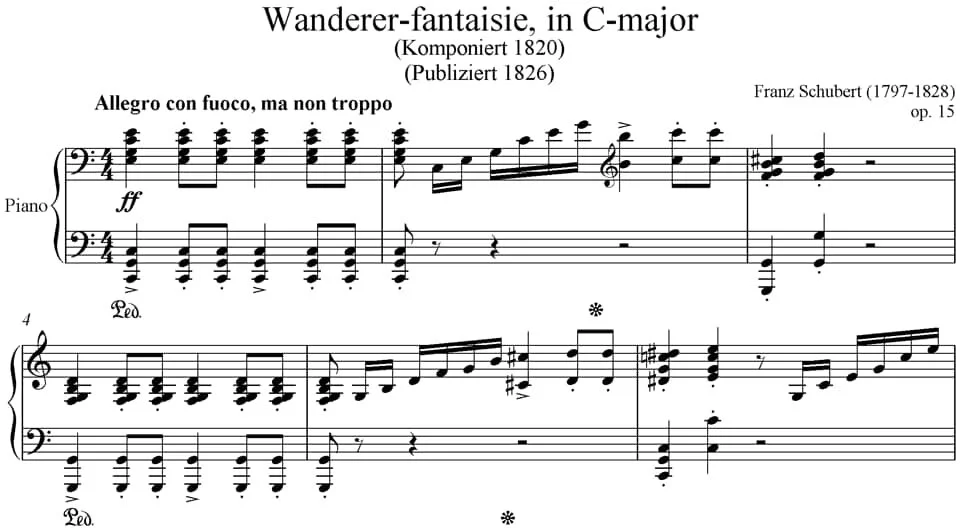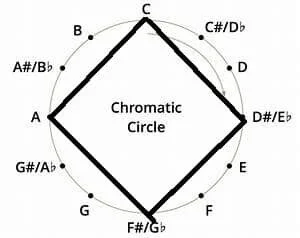DAILY DOSE of BEETHOVEN (June 26, 2020)
Forty-two years ago, a young passionate republican, Donald Phau, published the simple and straightforward case that Beethoven’s opera “Fidelio”, was based upon the actions of Gilbert and Adrienne Lafayette. His discovery was met with a deafening silence. Today, historian and musician, David Shavin, re-opened the case with some rather astounding research.
With Mr. Shavin's permission, we reprint from his findings.
Beethoven was hired to write an opera for Emmanuel Schickaneder (who commissioned Mozart's Magic Flute) and his Theater an der Wien. However, he was not satisfied with the libretto provided to him. Instead, near the end of 1803, Beethoven decides upon the French playwright Bouilly’s “Leonore, ou L’amour conjugal” (Leonore, or Married Love). Beethoven’s collaborator, Joseph Sonnleithner, prepared a German-language libretto.
The play is about a political prisoner and freedom fighter named Florestan, and his wife Leonore. When Florestan was imprisoned, Leonore disguises herself as a boy, Fidelio, and gets a job in the prison where her husband is imprisoned, in order to free him. The play parallels exactly the story of the Marquis de Lafayette, hero of the American Revolution, and his wife Adrienne.
In 1792, three years into the French Revolution, Lafayette was the leader of the Northern French Army, assigned to defend France against an expected invasion by Austria and Prussia. When he came into opposition with the blood-thirsty Jacobin leadership of France and their guillotine, he sought asylum at the U.S. Embassy in the Hague (He later wrote from prison to a friend, that “I supported the progress of the French Revolution down to the time when I thought it inconsistent with the rights of the people at large, the sentiments of the majority of their representatives, and the true notions of liberty, to unite with partial acts of violence, and I was of course obliged momentarily to seek for a neutral ground."). He was intercepted and placed under arrest by the Coalition of Britain, Austria and Prussia. Since they were going to war with Revolutionary France, linear thinking might conclude that they ought to have welcomed Lafayette as an ally, since he was breaking with the Jacobin leadership. But nothing in life is actually linear. Instead, they held Lafayette prisoner, outside of any rules that applied to war, simply because he represented the American solution for Europe and was a threat to the established rule. He was imprisoned in Prussia for two years, then transferred to Austria, for a total of about five years.
The similarity of Bouilly's play to the case of Lafayette is much amplified by the fact that in both cases, a loving wife intervening to save her husband through "L'amour conjugal", or married love.
Adrienne Lafayette herself was imprisoned in France, in late 1792-- shortly after her husband was imprisoned by the anti-France Coalition. She was there in the summer of 1794, when her sister, her mother and her grandmother were taken from her and guillotined. She only escaped the same fate due to pressures exerted by America – from
George Washington through his representatives in Paris, Gouverneur Morris and James Monroe. When finally released, a few months after the fall of Robespierre and the subsidence of the Terror, she proceeded to organize a confrontation with the Austrian Emperor, Francis II —demanding that he release her husband, or that he imprison her in the same dungeon. James Monroe and other Americans aided her with a passport as an American citizen. When a friend warned her that it was too dangerous, she assured him: “In this my decision is firm, and nothing in the world can bring me from it.” She did meet with the Emperor, who protested meekly to Adrienne that “his hands were tied” as “it was a complicated matter.” She was imprisoned at Olmuetz with her husband, but was taken away for medical treatment, and only later told that she could not return. She wrote: “They will not tear me away from here except with M. Lafayette; unless, perhaps, they drag me away dead.”
We ask our readers to re-examine our study of “Leonore's Aria”, posted on April 16, 2020. Could Leonore possibly represent anyone but Adrienne Lafayette? Are the arias of Leonore and Florestan not those of equals?
The courage and the fate of these two was a cause celebre at the time. Since the U.S. could not enter the fray openly, Alexander Hamilton led the unofficial effort to free Lafayette, including his friends in London, and attempted prison escapes. The playwright, Gottfried Lessing, led the Hamburg Republicans who managed to smuggle his letters from prison and publish them. By 1797, the international pressure to free Lafayette had reached a high point, and he was finally released.
In the months after Lafayette was finally freed, Beethoven was a frequent visitor of the French Ambassador to Vienna, Jean Bernadotte, a friend of LaFayette. It has long been thought that it was Bernadotte who suggested that Beethoven create a “Bonaparte” Symphony (The Eroica). It has been suggested that Lafayette helped keep Bonaparte in the republican circles and away from oligarchical influence, from 1798 until 1804. Thus the symphony might not just have been praise of Napoleon, but an intervention, to keep him on the republican pathway.
Much later Bouilly denied any connection of his play to the story of the Lafayettes. That was at a time that it would have been very dangerous for him to say otherwise. Just as Leonore's aria could not be based on anyone but Adrienne Lafayette, Florestan's aria can not be based on anyone but her husband. Like Leonore's aria, it is in three parts. Here are the words:
Recitativ
Gott! welch ein Dunkel hier!
O grauenvolle Stille!
O'd ist es um mich her,
Nichts lebet ausser mir.
O schwere Prüfung! doch gerecht ist Gottes Wille,
Ich murre nicht, das Maass der Leiden steht bei dir.
Aria
In des Lebens Frühlingstagen,
Ist das Glück von mir gefloh’n.
Wahrheit wagt ich kühn zu sagen,
Und die Ketten sind mein Lohn.
Willig duld’ ich alle Schmerzen,
Ende schmählich meine Bahn;
Süsser Trost in meinem Herzen:
Meine Pflicht hab’ ich gethan,
Allegro
Und spür' ich nicht linde, sanft säuselnde Luft?
Und ist nicht mein Grab mir erhellet?
Ich seh', wie ein Engel im rosigen Duft
Sich tröstend zur Seite mir stellet,
Ein Engel, Leonoren, der Gattin, so gleich,
Der führt mich zur Freiheit ins himmlische Reich.
English translation:
Recitativ
Alas! what darkness here!
Oh gray silence!
All is wasted here.
Nothing lives but me!
Oh, heavy trial! But God's will is just
I will not complain.
The measure of suffering rests with you.
Aria
In the springtime of my life
Happiness has flown from me:
I dared to speak the truth openly,
And chains were my reward
I will gladly bear my pain
And end my days in disgrace.
But it is a sweet comfort to my heart,
That I have done my duty.
Allegro
Do I feel a soft air flowing about me?
Has my tomb become brighter?
I see, like an Angel wafting of Roses,
Standing by, and comforting me,
An Angel, Leonore, my wife, my equal
Who leads me to freedom in a heavenly realm.
We present here, three versions by three different generations of musicians:
1. Julius Patzak, with Wilhelm Furtwangler as conductor, from 1948.
https://youtu.be/YWICkSDz-Y0
2. Canadian tenor, Jon Vickers, with Otto Klemporer as conductor, from 1962.
https://youtu.be/m1QqZbkgeag
3. Tenor Jonas Kaufman, from 2004.
https://youtu.be/q407GBv3wjY
There are several things about this aria, that suggest that Bouilly had Lafayette in mind as the real-life Florestan, despite his later
denials.
1. Accounts given by Lafayette, Adrienne and others of the filthy conditions he was kept in, including open latrines beneath him:
Alas! what darkness her!
Oh gray silence!
All is wasted here.
Nothing lives but me!
2. Accounts of his isolation:
In Olmuetz he was known as prisoner number two. They wished to keep him a secret. In the opera, Leonore only gradually finds out where he is. His existence has been kept a secret.
3. Her account of his physical weakness, but moral strength.
"We found him in the most absolute solitude, not knowing our frightful misfortunes; that it had been expressly prohibited to tell him if we existed, his children and I, that his wasting away is frightful, his chest a source of horrible suffering.“ Yet, despite his physical condition, she was able to report: “He is morally as you left him. You know the force and sweetness of his soul, and despite the moral and physical tortures that [his captors] have chosen to heap upon him, there is not the least alteration in his character, nor the least imbalance in his temper"
That quality sings out in the aria.
4. Bouilly's play was only one of many to celebrate the idea, and was written after Lafayette's release in 1798. Bouilly drew on earlier influences.
The first play on the subject was “Le Prisonnier d’Olmutz, ou le devouement conjugal,” (The prisoner of Olmutz, or conjugal devotion), by P.A. Prefontaine. It was dedicated to Adrienne Lafayette. The play opened in 1797, and triggered a profound reaction when premiered in Paris.
LaFayette’s former aide, Philippe Charles d’Agrain, published “Captivite de LaFayette”. It included a poem, “The Castle of Olmutz.” A translated portion reads: "/ In this abyss where light barely descends, / Must I, in my wrenching pains without relief,/ Die by intervals in the sight of my oppressors?” Then, while contemplating what he had sacrificed, Adrienne appears.
Friedrich August Baumbach’s “Le songe de LaFayette” (The Dream of Lafayette), was put to music in a mini-drama, “Lafayette’s Dream,” by Friedrich von Oertel. There, LaFayette, in his dungeon, is “emasculated by the poison of loneliness” and tortured by visions of the guillotines and angry mobs. Then, the guardian spirit of America visits him, showing him a celebration of LaFayette in Boston and a warm reunion with Washington. The success in America even spills over into solving France’s turmoil. "LaFayette’s dream" clarifies his sense of mission and newly invigorates him. This 1794 scene of the guardian angel would also find its way into Bouilly’s play, in Florestan’s inspiration from above, but by his real-life wife as a guardian angel.
After all he had been through, Lafayette certainly deserved the right to retire. However, in 1824-25, at the age of 67, he undertook a successful year-long tour of the USA, in order to renew the spirit of the American Revolution.
We encourage historians, seeker of truth, and our readers to engage in a discussion on this most fascinating gem of American history. There is everything to be gained!




















